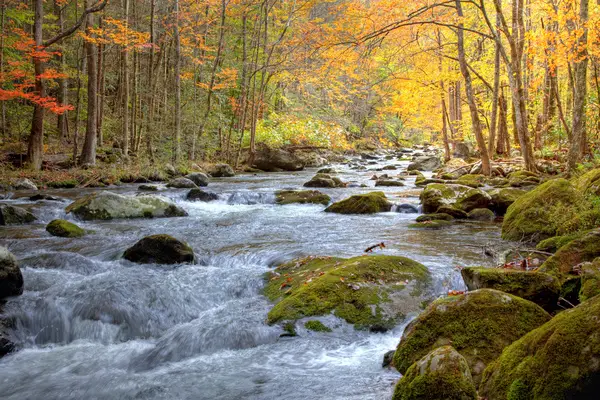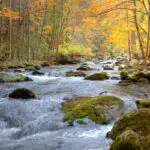It’s most likely a position many of us have found ourselves in; You’re boating or floating or wading down a creek to get to a good fishing spot or as part of a day out on your canoe, and eventually, you cross through private property.
In these situations, it’s good to question whether you can legally be there.
Is it trespassing to float down a creek on private property? Are creeks considered public land? We’re here to provide some answers.
Table of Contents
- Are Creeks Public Land?
- What are Riparian Rights?
- Who Owns the Water?
- What Does “Navigable” Mean?
- Who Owns the Riverbed?
- Is it Trespassing to Fish in Creeks on Public Land?
- Final Thoughts
Are Creeks Public Land?
The unsatisfying answer is that it depends. It depends on which state or country you’re in. It depends on whether you are talking about the water in the creek or the land underneath. And it depends on where that water flows.

To understand whether the creek you plan to travel down is considered public land, you must dig into the relevant state’s legislature.
You can usually find the specific laws around waterway laws and riparian rights in the state code.
Related: Can Public Land Be Closed?
What are Riparian Rights?
In short, riparian rights refer to a system for allocating and controlling water usage among landowners who own adjoining property with waterways.
The specifics will vary from state to state, but generally, landowners can use the water that flows through their property for personal or domestic use.
Commonly, there is a stipulation that states the water usage must be reasonable and not interfere with the rights of landowners downstream.
So, you can’t dam up a creek that runs through your property, and there are limitations to how much water you can use and how you can use it.
Who Owns the Water?
Again, there is some variation from state to state on the specifics here. In most states, the water is owned by the Commonwealth.
So, in most states, you can boat or float down a creek that runs through private property, so long as you access the water from a permitted point of entry. There are some exceptions here, though.
The main exception that you commonly find in the legislature is the requirement for the waterway to be “navigable”. A creek can be deemed not navigable; in this case, the water in the stream would be owned by the landowner.
What Does “Navigable” Mean?
This is where things get tricky. One of the main reasons the water in waterways is publicly owned is to facilitate transportation for commerce or recreation. Each state will have a unique way of defining “navigable” as it relates to waterway laws.
One classic way of defining a creek as navigable is determining whether a log could pass down the creek during at least part of the year.
For example, Texas Parks & Wildlife would consider a creek to be public if it is either “navigable by statute” or “navigable by fact”.
A creek is considered to be “navigable by statute” if the creek bed (not just the area covered by water) retains an average width of 30 feet.
A stream can be deemed navigable by fact if it’s waters are useful to the public for at least part of the year.
Who Owns the Riverbed?

If things weren’t already complicated enough, the laws around ownership of the riverbed vary significantly from state to state.
In Montana (and most of Canada) for example, the water, riverbed, and the bank up to the average high water mark are all considered to be public land. Meaning you can wade in the creek and even fish on the bank without trespassing.
By contrast, American Whitewater claims that in Georgia, the water, riverbed, and bank are all considered to be owned by the landowner. They are therefore not accessible to the public, even if the creek is navigable.
Most states lie somewhere in between these extremes. In Kansas, for example, only the Arkansas, Kansas, and Missouri rivers are considered to be public waterways.
In Ohio, the water is considered public, but whether the land underneath is public is determinant case to case.
Is it Trespassing to Fish in Creeks on Public Land?
Again, to get a clear answer to this, you will need to look into the specific legislation in the relevant state.
In most states, the water is considered to be owned by the public. This means if you are floating in a canoe on the water, you are not trespassing, so long as you didn’t have to trespass to drop in.
Compared to planting food on public land, fishing tends to be more protected!
If you plan to wade in the water or stand on the banks, the matter gets trickier.
By most states’ definitions, if you were to fish while wading in the water in a creek that is on private property, you would be trespassing. The same goes for standing on the banks.
When in doubt, do some additional research to help you understand the specific restrictions in your state.
If possible, you can always simply ask the landowner if you can go in the stream on their property.
Final Thoughts
It turns out that the answer to the question, “are creeks public land” is not so straightforward.
You’ll need to research your state’s specific legislature and the nature of the creek you are interested in.
Though you may not have found the exact answer to your question, hopefully, this article provided some background information and has made it easier for you to find out whether the creek you want to access is public property.






